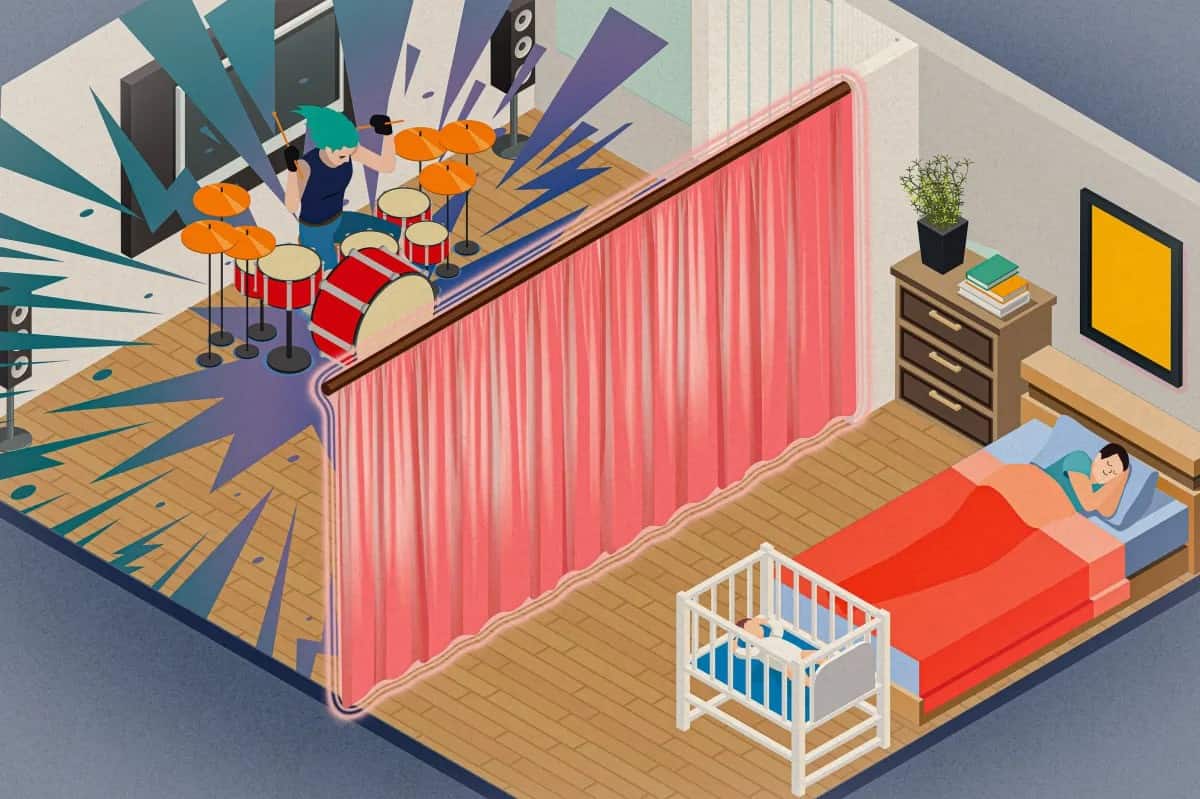
In an era where the background hum of urban life constantly intrudes upon our daily routines, a new development in sound-suppression technology promises to turn down the volume. Researchers from MIT have engineered a special silk fabric so thin it’s barely thicker than a human hair yet powerful enough significantly to reduce noise transmission in large spaces.
This isn’t any simple fabric that you can hang like a curtain though. Its soundproofing secret lies in piezo-electric fibers that force the fabric to remain still, thereby blocking acoustic vibrations.
The Innovation Behind The Silence
The special soundproofing fabric can serve a dual purpose. Firstly, the fabric can generate sound waves that counteract unwanted noise, effectively canceling out these frequencies. This technique mirrors the principle behind noise-canceling headphones that use microphones to detect external sounds and then produce opposite sound waves to cancel out the background noise.
Secondly, in a less intuitive but equally impressive application, the fabric can be manipulated to remain motionless. Since sound is just an acoustic vibration in the air, this technique can prevent the transmission of noise in enclosures behind the fabric. This method essentially reflects sound, akin to how a mirror reflects light. This technique can suppress sound in large spaces, such as in a room or plane, whereas the first method works for very small spaces.
“Noise is a lot easier to create than quiet. In fact, to keep noise out we dedicate a lot of space to thick walls. [First author] Grace’s work provides a new mechanism for creating quiet spaces with a thin sheet of fabric,” said Yoel Fink, an MIT professor in the departments of Materials Science and Engineering and Electrical Engineering and Computer Science, and senior author of the new study.
Practical Applications and Future Prospects

The use of common, lightweight materials such as silk, canvas, and muslin in creating these noise-suppressing fabrics makes this technology an accessible solution for everyday problems. Imagine transforming bustling office landscapes into serene workspaces or turning a noisy bedroom into a peaceful sanctuary, all through strategically placed fabric.
The implications of this technology extend beyond mere convenience. As urban environments grow denser and noisier, the ability to create quiet spaces with minimal structural modifications could improve mental health and increase productivity. According to estimates, chronic noise exposure contributes to 48,000 new cases of heart disease in Europe each year and disrupts the sleep of 6.5 million people.
For instance, the researchers envision using these special fabrics as dividers in open workspaces. Alternatively, the thin fabrics can line walls to prevent sound from getting through.
Silence has never been so thin
But how does it all work? The core of this technology lies in piezoelectric fibers — materials that generate an electrical signal when deformed. These fibers have been ingeniously woven into normal fabric like silk to create a unique sound-canceling system.
Previously, the MIT researchers used piezoelectric fibers to turn fabrics into microphones. This time, they’ve run everything in reverse, applying electrical signals to piezoelectric fibers to produce vibrations that emit sound waves. Essentially, the fabrics have become loudspeakers — but not the kind you can hear. These waves are designed to destructively interfere with environmental noises, effectively silencing them.
“While we can use fabric to create sound, there is already so much noise in our world. We thought creating silence could be even more valuable,” said the study’s lead author Grace (Noel) Yang.
Although the current system effectively reduces noise in controlled settings — diminishing sounds up to 65 decibels — it’s the broader applications that excite researchers. The fabric’s ability to adjust to different sound frequencies and the potential for larger-scale noise reduction opens new avenues for both public and private spaces plagued by unwanted noise.
The researchers see this as just the beginning. By experimenting with the number of fibers, their arrangement, and the electrical inputs, they aim to enhance the fabric’s noise-canceling capabilities.
In a world where noise is all too easy to come by but silence is a scarce commodity, this innovative fabric could represent a significant step forward in environmental control and soundproofing.
The findings appeared in the journal Advances Materials.






